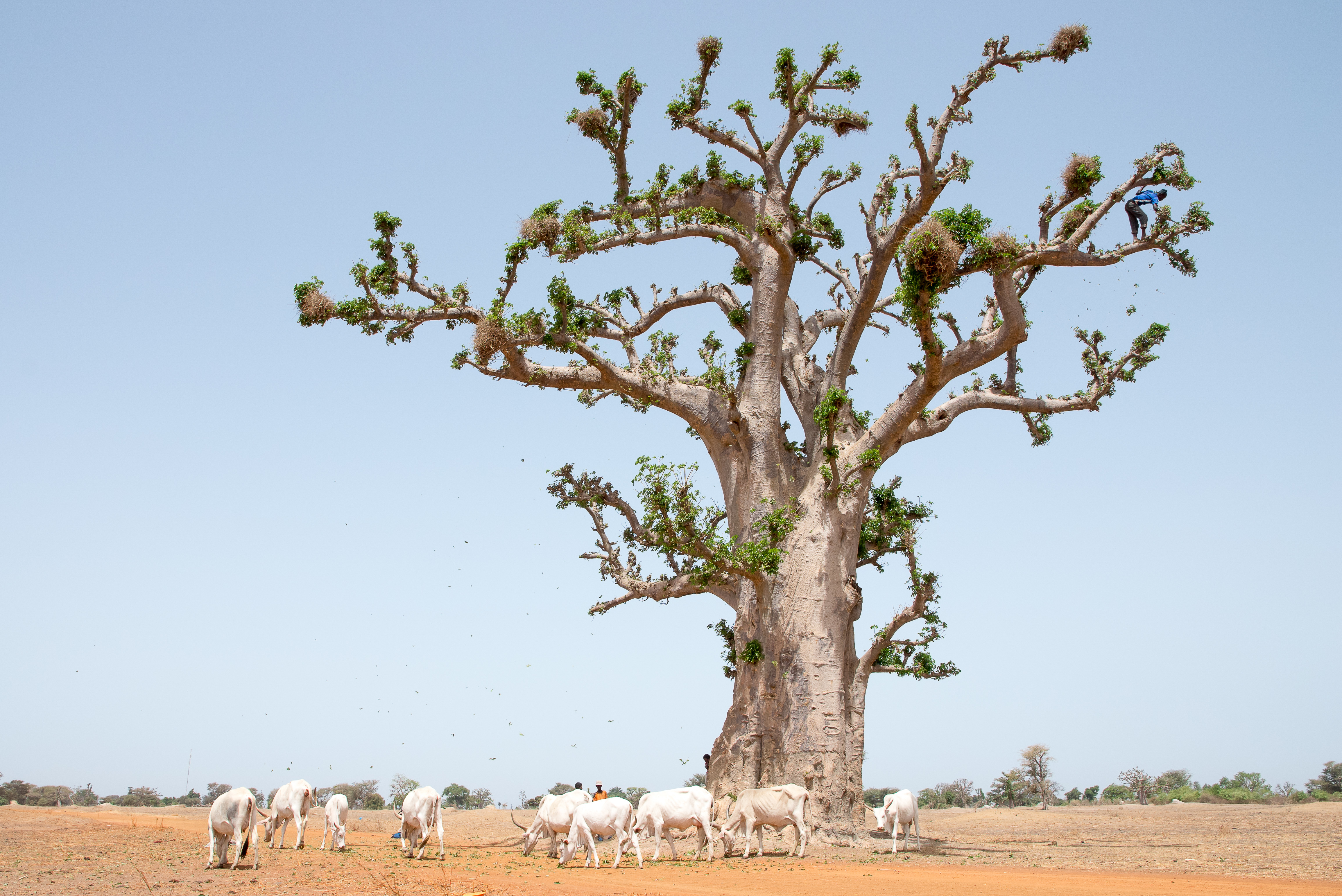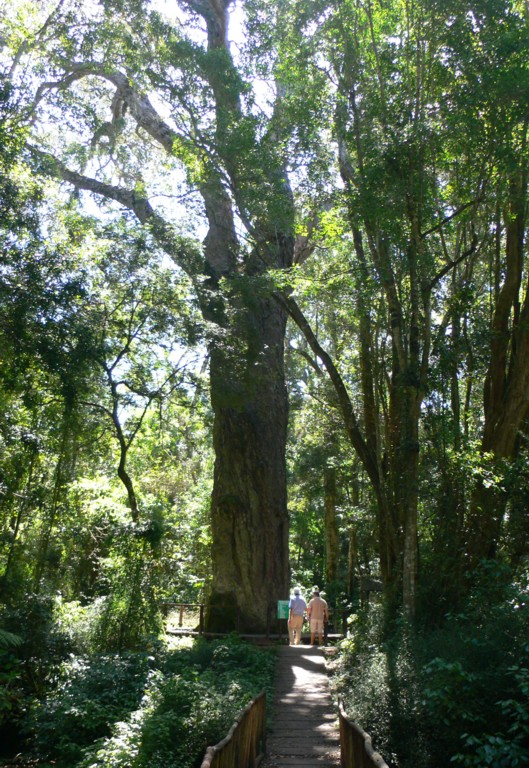|
Glencoe Baobab
Glencoe Baobab is the stoutest and second largest baobab (''Adansonia digitata'' L.) in South Africa, and possibly the stoutest tree in the world. The Champion Tree is located in Glencoe Farm, near Hoedspruit, Limpopo and had a trunk diameter of . The tree divides into several trunks close to the ground. The main trunk had lowered into the ground a long time ago. In November 2009 the tree split in two parts, opening up an enormous hollow. The diameter of the tree before the split was with a circumference of . The height is , and the spread of crown is . The dates "1893" and "1896" are carved on the tree's stem. Radiocarbon dating performed in 2013 suggested an age of 1,835 years.{{cite web , last1=Grové , first1=Naas , title=How old can trees be?, url=http://www.northwestnewspapers.co.za/herald/home/series/indigenous-trees/38-english-indigenous-trees/73-how-old-can-trees-be , website=northwestnewspapers.co.za , publisher=Rustenburg Herald , accessdate=13 April 2016 , archive ... [...More Info...] [...Related Items...] OR: [Wikipedia] [Google] [Baidu] |
Hoedspruit
Hoedspruit (Afrikaans for ''Hat Creek'') is a town situated at the foot of the Klein Drakensberg (Afrikaans for "Small Dragon Mountains" range), in the Limpopo province of South Africa, on the railway line from Tzaneen to Kaapmuiden. Economy The town, while still small, has grown in recent years. Due to its proximity to private game reserves and the Kruger National Park, ecotourism is a major contributor to the local economy. Air Force Base Hoedspruit and Eastgate Airport Air Force Base Hoedspruit is home to 19 Squadron, a helicopter unit of the South African Air Force. The civil Eastgate Airport Air Force Base Hoedspruit is an airbase of the South African Air Force. It is located adjacent to the Kruger National Park. In the late 1990s an unused portion of the base was converted into a civilian airport known as Eastgate Airport. It wa ..., which shares the Air Force base's airfield, is served by several charter operators. A feasibility study was conducted on whether th ... [...More Info...] [...Related Items...] OR: [Wikipedia] [Google] [Baidu] |
Limpopo
Limpopo is the northernmost province of South Africa. It is named after the Limpopo River, which forms the province's western and northern borders. The capital and largest city in the province is Polokwane, while the provincial legislature is situated in Lebowakgomo. The province is made up of 3 former homelands of Lebowa, Gazankulu and Venda and the former parts of the Transvaal province. The Limpopo province was established as one of the new nine provinces after South Africa's first democratic election on the 27th of April 1994. The province's name was first "Northern Transvaal", later changed to "Northern Province" on the 28th of June 1995, together with two other provinces. The name was later changed again in 2002 to the Limpopo province. Limpopo is made up of 3 main ethnic groups namely; Pedi people, Tsonga and Venda people. Traditional leaders and chiefs still form a strong backbone of the province's political landscape. Established in terms of the Limpopo House of Tr ... [...More Info...] [...Related Items...] OR: [Wikipedia] [Google] [Baidu] |
Adansonia Digitata
''Adansonia digitata'', the African baobab, is the most widespread tree species of the genus ''Adansonia'', the baobabs, and is native to the African continent and the southern Arabian Peninsula (Yemen, Oman). These are long-lived pachycauls; radiocarbon dating has shown some individuals to be over 2,000 years old. They are typically found in dry, hot savannas of sub-Saharan Africa, where they dominate the landscape and reveal the presence of a watercourse from afar. They have traditionally been valued as sources of food, water, health remedies or places of shelter and are a key food source for many animals. They are steeped in legend and superstition. In recent years, many of the largest, oldest trees have died, possibly due to climate change. Common names for the baobab include monkey-bread tree, upside-down tree, and cream of tartar tree. Description African baobabs are trees that often grow as solitary individuals, and are large and distinctive elements of savanna or scrubla ... [...More Info...] [...Related Items...] OR: [Wikipedia] [Google] [Baidu] |
List Of Champion Trees (South Africa)
Champion Trees in South Africa are individual trees or groves that have been identified as having special significance, and therefore protected under Section 12(1) of the National Forests Act of 1998 by the Department of Forestry, Fisheries and the Environment. History In 2003, the Department of Agriculture, Forestry and Fisheries initiated the project to identify and grant special status to indigenous and non-indigenous trees in South Africa that meet certain set criteria. From May to July 2003, workshops were held in Gauteng, KwaZulu-Natal and the Western Cape to gain consensus from experts to assist in the identification process of exceptional trees (Champion Trees) that are worthy of special protection throughout South Africa. The Department of Agriculture, Forestry and Fisheries initiated the Champion Trees Project with the purpose of identifying exceptional trees and regulating for their special protection using the National Forests Act of 1998 (NFA). Section 12 of ... [...More Info...] [...Related Items...] OR: [Wikipedia] [Google] [Baidu] |
Radiocarbon Dating
Radiocarbon dating (also referred to as carbon dating or carbon-14 dating) is a method for determining the age of an object containing organic material by using the properties of radiocarbon, a radioactive isotope of carbon. The method was developed in the late 1940s at the University of Chicago by Willard Libby. It is based on the fact that radiocarbon () is constantly being created in the Earth's atmosphere by the interaction of cosmic rays with atmospheric nitrogen. The resulting combines with atmospheric oxygen to form radioactive carbon dioxide, which is incorporated into plants by photosynthesis; animals then acquire by eating the plants. When the animal or plant dies, it stops exchanging carbon with its environment, and thereafter the amount of it contains begins to decrease as the undergoes radioactive decay. Measuring the amount of in a sample from a dead plant or animal, such as a piece of wood or a fragment of bone, provides information that can be used to calc ... [...More Info...] [...Related Items...] OR: [Wikipedia] [Google] [Baidu] |
List Of Individual Trees
The following is a list of notable trees. Trees listed here are regarded as important or specific by their historical, national, locational, natural or mythological context. The list includes actual trees located throughout the world, as well as trees from myths. Real forests and individual trees Africa Living Historical Asia Living Historical Europe Living Historical Petrified North America Living Historical Petrified Other * Anthem Christmas tree, the tallest Christmas tree in the United States, erected annually at the Outlets at Anthem outside Phoenix, Arizona. *Boston Christmas Tree. Since 1971, given to Boston by the people of Nova Scotia in thanks for their assistance during the 1917 Halifax Explosion. Located in the Boston Common. *Capitol Christmas Tree, the tree erected annually on the West Front Lawn of the United States Capitol, in Washington, D.C. * Chicago Christmas Tree, the annual tree located in Millennium Park in the city of Chicag ... [...More Info...] [...Related Items...] OR: [Wikipedia] [Google] [Baidu] |
Individual Baobab Trees
An individual is that which exists as a distinct entity. Individuality (or self-hood) is the state or quality of being an individual; particularly (in the case of humans) of being a person unique from other people and possessing one's own needs or goals, rights and responsibilities. The concept of an individual features in diverse fields, including biology, law, and philosophy. Etymology From the 15th century and earlier (and also today within the fields of statistics and metaphysics) ''individual'' meant " indivisible", typically describing any numerically singular thing, but sometimes meaning "a person". From the 17th century on, ''individual'' has indicated separateness, as in individualism. Law Although individuality and individualism are commonly considered to mature with age/time and experience/wealth, a sane adult human being is usually considered by the state as an "individual person" in law, even if the person denies individual culpability ("I followed instr ... [...More Info...] [...Related Items...] OR: [Wikipedia] [Google] [Baidu] |
Geography Of Limpopo
Geography (from Greek: , ''geographia''. Combination of Greek words ‘Geo’ (The Earth) and ‘Graphien’ (to describe), literally "earth description") is a field of science devoted to the study of the lands, features, inhabitants, and phenomena of Earth. The first recorded use of the word γεωγραφία was as a title of a book by Greek scholar Eratosthenes (276–194 BC). Geography is an all-encompassing discipline that seeks an understanding of Earth and its human and natural complexities—not merely where objects are, but also how they have changed and come to be. While geography is specific to Earth, many concepts can be applied more broadly to other celestial bodies in the field of planetary science. One such concept, the first law of geography, proposed by Waldo Tobler, is "everything is related to everything else, but near things are more related than distant things." Geography has been called "the world discipline" and "the bridge between the human and th ... [...More Info...] [...Related Items...] OR: [Wikipedia] [Google] [Baidu] |




.jpg)
